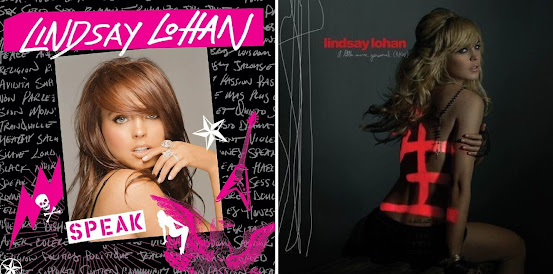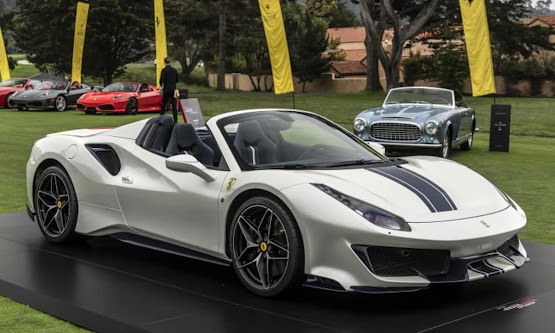Album (pronounced al-buhm)
(1) A
bound or loose-leaf book consisting of blank pages, pockets, envelopes etc, for
storing or displaying photographs, stamps, or the like, or for collecting
autographs.
(2) A
digital collection of photographs, stored on a computer or mobile device for
viewing, displaying, or sharing.
(3) A
record or set of records containing several musical selections, a complete play
or opera etc.
(4) The
package or container for such a record or records:
(5) A
collection of audio recordings released together as a collected work:
(6) A
printed book containing an anthology of writings, reproductions of photographs
or artwork, musical compositions etc.
(7) In
Ancient Rome, a white tablet or register on which the praetor's edicts and
other public notices were recorded.
1645–1655:
From the late Middle English albo (souvenir
book), from the Classical Latin album
(a board calked or painted white, onto which was inscribed in black, certain public
notices, most notably the Annales Maximi,
compiled by the Pontifex Maximus, high
priest of the Collegium Pontificum (College
of Pontiffs) which listed the year’s most significant events and appointments). In Latin, the literal meaning of album was "white in color;
whiteness", a noun use of the neuter of the adjective albus (white).
Album of Frederick Handel's (1685-1759) Messiah (1741) on 18 x 78 rpm shellac records; Royal Philharmonic Orchestra, under Sir Thomas Beecham (1879-1961), RCA Victor, 1947.
The word was revived in Prussia circa 1645 by German scholars whose custom was to keep an album (amicorum) of colleagues' signatures, the meaning later expanded to include "book with blank leaves meant to collect signatures and other souvenirs" and according the entry in Samuel Johnson’s (1709-1784) A Dictionary of the English Language (1755), the album was "…a book in which foreigners have long been accustomed to insert autographs of celebrated people." Photographic albums (in which people mounted photographs) were first advertised in 1859 and in 1882, the publisher Stanley Gibbons added to their catalogue the “stamp album” to meet the demand from the increasingly popular (and sometime profitable) hobby of philately. The word became the popular descriptor of the (twelve-inch (300 mm)) 33⅓ rpm LP (long-playing) record in the 1950s although the term had earlier been used of (what would later be known as “boxed sets”) the bundled collections of 78 rpm records which, for certain recordings, demanded dozens of disks. The use of “album” was an allusion to the resemblance of the paper sleeves, in which the shellac (and later polyvinyl chloride (PVC and usually called “vinyl”)) disks were stored, to the pages of autograph or stamp albums.
Lindsay Lohan's discography: Speak (Casablanca, 2005) & A Little More Personal (Raw) (Casablanca, 2005).
The Grateful Dead, Anthem of the Sun (1968).
The twelve-inch vinyl LP was an ideal format for commercial music distributors because it allowed 40-50 minutes of product to be packaged on the one disk, thereby permitting even long opera performances to be released as an album which required usually no more than 3-4 disks. In popular music, the 50 minute limit (which technology did later permit to be extended to about an hour) was perfect and there many releases which barely troubled the lower end of the limit, format allowing acts to release several albums a year, each with perhaps a dozen songs (“tracks” as they came to be called). This corresponded well with both creative output and the occasional release of a live performance and when required, double albums could be recorded and by the 1970s, there were even some triple and quadruple-disk albums.
The Incredible String Band, The 5000 Spirits or the Layers of the Onion (1967).
The eight-track cartridge and the much more successful cassette tape proved handy as portable media but operated less as a competitor than an adjunct to the vinyl product and it wasn’t until the compact disc (CD) gained critical mass in the mid-1980s that the 12 inch format came to be supplanted. The CD was another format which proved ideal for the industry, particularly during the first decade-odd of its existence when the duplication hardware was for most (unlike cassette decks which were bundled with mainstream (3-in-1) stereo systems), prohibitively expensive. The CD didn’t add greatly to the duration available for recording but the sound quality was superior (some vinyl audiophiles still dispute that), unit production and distribution costs were lower and windfall profits were raked in as the early CDs were sold at high prices and many consumers actually duplicated at least some of their vinyl collection as well as buying new releases. Thus the “album age” lasted until displaced by the digital era which made possible the consumer’s (probably long-standing) preference to purchase the individual tracks they prefer.
Iron Butterfly, In-A-Gadda-Da-Vida (1968).
Until largely displaced by the smaller CD, the twelve inch album sleeve existed as a form of pop-art which attracted its own school of criticism. Between the mid-1960s and late 1980s, small industries arose to create the artwork and there was even a niche in specialist publishing which produced compilations, the more psychedelic efforts especially popular and the “gatefold covers” used for the double and triple albums even permitted a wider vista; the results sometimes good, sometimes not. The so-called “concept album” appeared to have had little effect on the album cover artwork which is surprising given it was such an obvious way to encapsulate a “concept”. However, the definition of the “concept album” was always vague and while there were plenty with some discernible theme, it could with others be difficult to work out just what the “concept” was supposed to be. Still, it was a word which suggested ambitions beyond a collection of three-minute singles and in the 1960s there was a growing industry of earnest critics, anxious to find meanings and ready to fill in the gap if none was immediately obvious. Sometimes they would write as if influenced by TS Elliot, sometimes they'd just gush and if the idea had been delayed a generation, they would probably have called them "paradigm albums".
There were great moments in album covers but, unfortunately, the memorable cover for Svetlana Gruebbersolvik's My Lips are for Blowing was a fake. Beginning in the 1960s, the album cover with its standardized 12 x 12 inch (300 x 300 mm) format became a sub-genre of pop-art, the movement lasting until the smaller media of the CD rendered the packaging obsolete. The twelve inch format has enjoyed something of a twenty-first century revival but the volumes are too low to support the scale of graphic-art industry which once flourished.



























